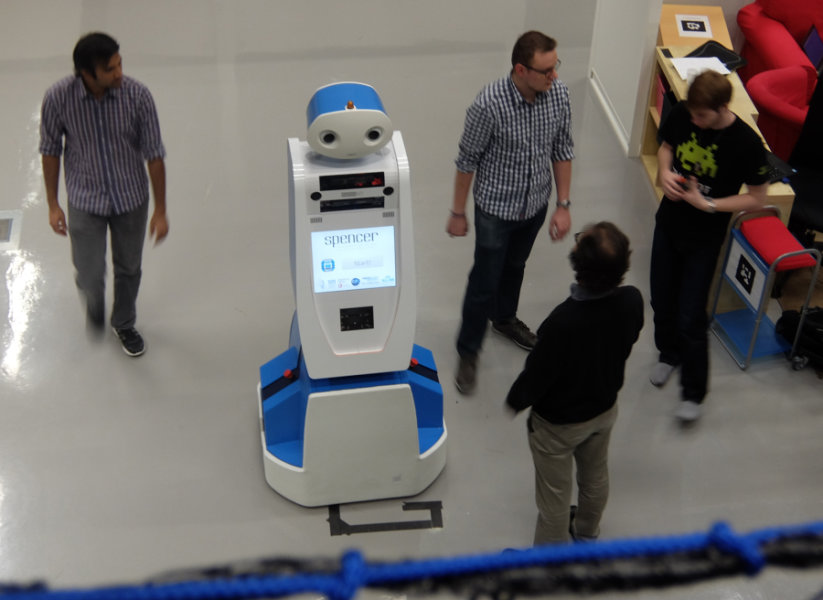-
Tips for becoming a good boxer - November 6, 2020
-
7 expert tips for making your hens night a memorable one - November 6, 2020
-
5 reasons to host your Christmas party on a cruise boat - November 6, 2020
-
What to do when you’re charged with a crime - November 6, 2020
-
Should you get one or multiple dogs? Here’s all you need to know - November 3, 2020
-
A Guide: How to Build Your Very Own Magic Mirror - February 14, 2019
-
Our Top Inspirational Baseball Stars - November 24, 2018
-
Five Tech Tools That Will Help You Turn Your Blog into a Business - November 24, 2018
-
How to Indulge on Vacation without Expanding Your Waist - November 9, 2018
-
5 Strategies for Businesses to Appeal to Today’s Increasingly Mobile-Crazed Customers - November 9, 2018
A Robot To Guide Lost Passengers at Airports
The “Spencer” project is a collaboration between researchers and businesses in five countries.
Advertisement
Amsterdam’s Schipol airport is taking a futuristic approach to help frantic holiday travelers navigate terminals during the busiest season of the year.
Spencer’s navigation is a combination of having built-in maps for permanent structures (e.g. walls) and mapping its immediate surroundings with lasers. The role of Spencer is very simple – to assist passengers find their way through the large airport, providing walking directions to those who need it.
Meet Spencer, the newest employee at Amsterdam’s Schiphol Airport, and the latest in a growing global group of robots being dispatched to deal with everyday airport passenger assistance.
The robot with its friendly but unstirring “face” will be guiding passengers, unaccustomed to navigating worldwide airports, from one gate to another.
After the trial, researchers will use the test data to make improvements on the design before its premiere run in March 2016, which will be attended by representatives of the European Commission and prominent guests.
Örebro University computer Science professor Achim Lilienthal said that they are working on a general map representation that includes and allows the robot to handle temporarily permanent objects.
The idea for the project came from Dutch airline KLM because so many of its customers were getting lost in the airport and missing flights. It’s difficult to know how long these obstructions will last or be in a specific spot, which in turn makes it harder for the robot to identify its own location.
The robot can understand human behaviour and respond accordingly, as well as communicate in several languages. Of course, researchers are expecting to encounter a lot of errors at first, because there are so many unpredictable variables that Spencer needs to be able to assess, but they also know that the cute robot can constantly be updated with unpredictable facts that will help it develop better calculations.
Advertisement
“This technology can be used in all robots meant to interact with humans”, said Lilienthal.




























